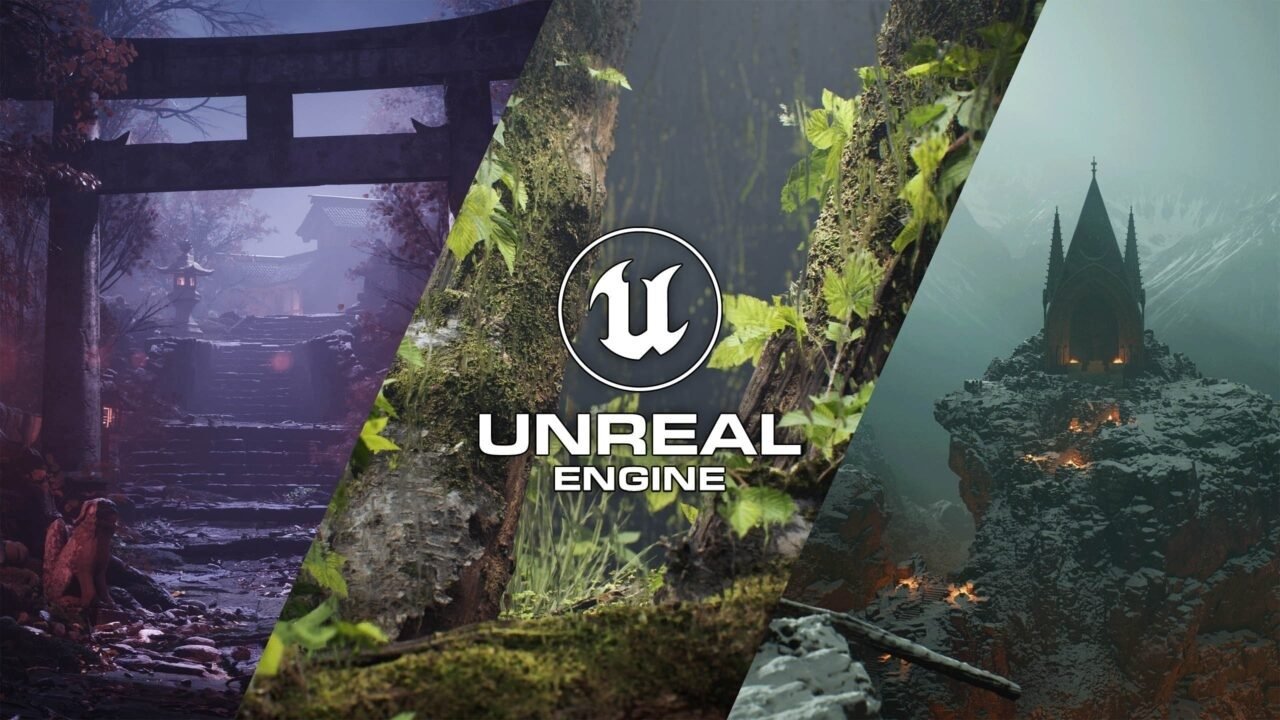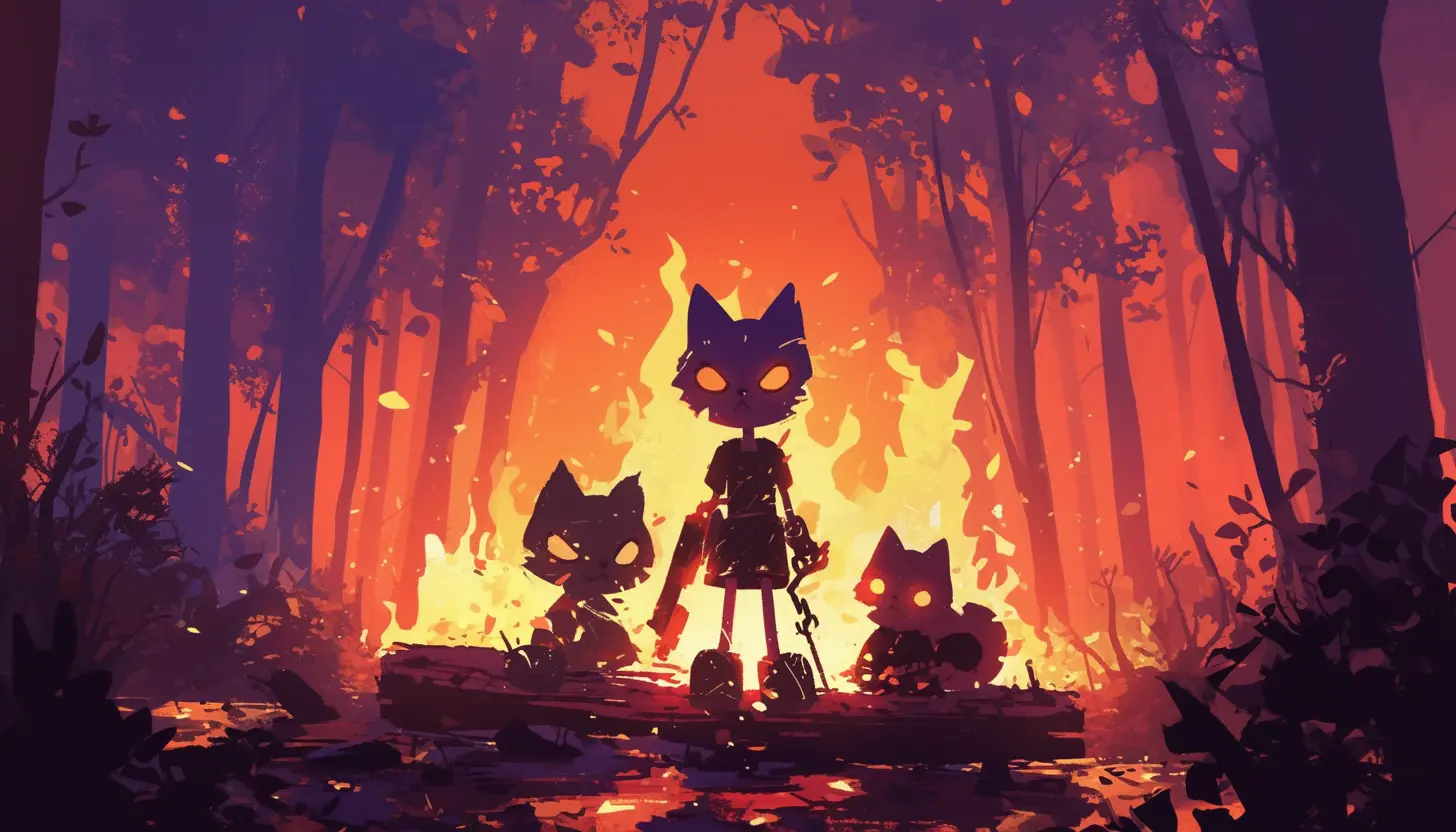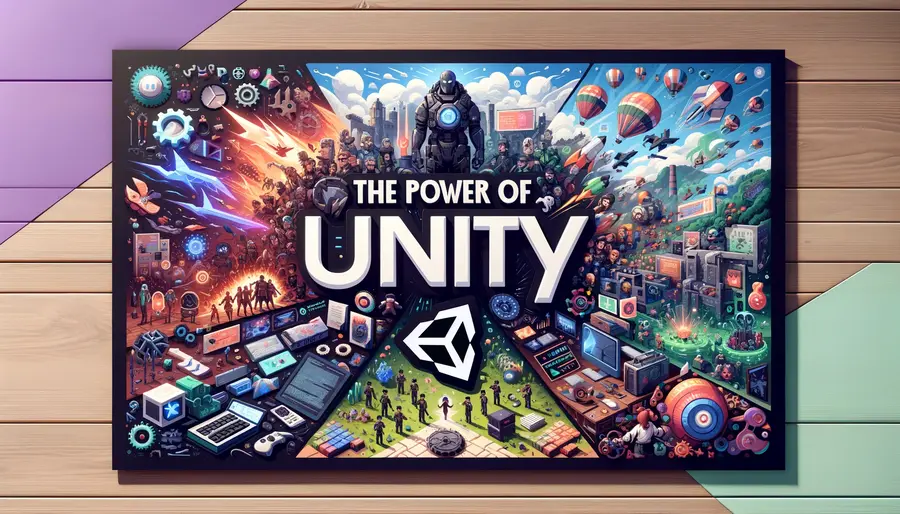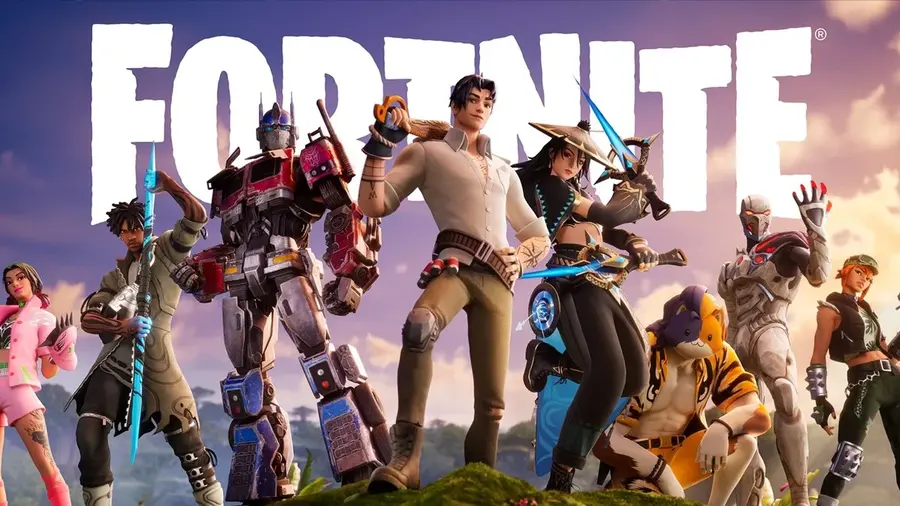Experience the stories behind the great video games - a journey into the depths...
Read moreHow to create a game in 2025

Table of Contents
- how Create a game yourself
- First step - planning the idea
- Second step - choosing a platform and target audience
- Third step - building the development team
- Step four - planning the game
- Fifth step - choosing the appropriate game development software
- Unity
- Unreal Engine
- Step six - start from the base
- Seventh stage - game tests
- Eighth step - marketing the game
- Tips for developing your first video game
- How to create a game in 2025 – in summary
- Dreaming of creating a game?
Come learn how to develop a game from scratch!
Join the Enril Engin course and start creating your next game
The world of gaming is in a tremendous growth spurt. The video game market in the United States reached an enormous value of 106.8 billion dollars in 2023, and the number of players worldwide is expected to reach 1.47 billion by 2027. Accordingly, the expected revenue from video games is expected to increase and stand at 363 billion dollars!
These figures indicate a bright future for the gaming industry, both in terms of popularity and economic scope.
So if you have a passion to create a game, now is the time to make a dream come true!
Unlike in the past, you don't need to be a huge company or invest thousands of dollars to implement a creative idea for a game. All you need is a good idea, a desire to learn and persistence.
Today there are many tools and resources available that can assist you in your game development journey.
Game engines like Unity and Unreal Engine Offers advanced and user-friendly solutions, and many companies offer online courses and workshops that will help you learn the ropes of programming, graphic design, music creation, and more.
So what are you waiting for? Join us on a fascinating journey of creating your own game!
Step by step, we will learn and build together, sharing knowledge, experience and vision. Enjoy the process, be open to learning and always remember - There is no limit to creativity!
Want to create your own game?
Join the Enril Engin course and learn how to turn an idea into reality!
Table of Contents
- how Create a game yourself
- First step - planning the idea
- Second step - choosing a platform and target audience
- Third step - building the development team
- Step four - planning the game
- Fifth step - choosing the appropriate game development software
- Unity
- Unreal Engine
- Step six - start from the base
- Seventh stage - game tests
- Eighth step - marketing the game
- Tips for developing your first video game
- How to create a game in 2025 – in summary
- Dreaming of creating a game?
How to make a game yourself
Want to fulfill your dream and create your own game without hiring a programmer?
This guide will give you all the necessary steps to turn the idea into reality, from the planning phase to the testing phase.
First step - planning the idea
Before diving into the world of game development, it is important to stop and plan your idea.
What do you want to create? What will be the main concept of the game? What genre will he focus on?
Here are some popular genres:
- puzzles
- Endless running games
- satisfied
- Arcade games
- comedy
- terror
- role-playing games
- visual novels
- RPG (role playing games)
Important tip!
You should limit your game to a specific genre. This will prevent you from getting involved with excessive complexity and will allow you to focus on efficient and faster development.
Take time to think about your idea and plan it carefully. This is the first and most important step in creating a successful video game!
Did you come up with an idea? Did you choose a genre? Excellent!
Now it's time to get to know the characters that will populate your world. Let your imagination run wild - create interesting characters that fit the style and story. They can be humans, animals, aliens, or anything else you can think of!
Not just characters:
It is also important to think about the environment in which the game will take place.
What will she look like? What colors will it have? What backdrops will be in the background?
perfect match:
The environment should fit in with the game genre. For example, in a shooting game like “Fortnite", the environment is colorful and full of details - perfect for a genre that requires fast movement and evasion.
Everything connects:
The characters and the environment together create the game experience. They should be interesting, adapted to each other and to the genre, and provide the player with a fascinating world to explore.
Tips for creating characters and environment:
- Start with a simple idea and simplify it.
- Let your imagination run wild.
- Pay attention to the compatibility between the characters, the environment and the genre of the game.
- Ask yourself: What will make this game aSpecial?
Second step - choosing a platform and target audience
Before starting the development of a video game, it is important to define your target audience and the platform on which the game will be released. Different players prefer different types of games, so choosing a specific target audience will allow you to focus on their needs and wants.
Audience:
- Casual players – Players who play for a short time and usually look for simple and easy to learn games.
- "Hardcore" players - Players who play for a long time and are looking for challenging and complex games.
Dividing the target audience by categories such as age can help you determine the structure of the game, including identifying the characters and scenes that will be incorporated into it to create an immersive experience.
platform:
- consoles (Xbox, Playstation)
- mobile devices (smartphones, tablets)
- Personal computers (Windows, Linux, MacOS)
Each platform has different technical requirements, unique user interface, means of control and different input methods. It is important to take all of these into account in the game development process.
In addition, each platform has its own unique set of regulations and standards that you must comply with.
Tips for choosing a target audience and platform:
- Explore the market – Try to understand which games are popular among different target audiences and on which platform they play.
- Set your goals – What do you want to achieve with your game? Do you want to create a popular game that will reach a wide audience, or a niche game that will focus on a specific audience?
- Consider your resources – Do you have the time and money to develop a game for a certain platform?
Choosing the right target audience and platform is an important step in developing a successful video game.
By understanding your target audience and platform requirements, you can create a game that will be fun and engaging for many players.
Third step - building the development team
development Video Games It is a complex process that requires extensive knowledge and diverse skills. A single person, no matter how talented, may encounter many difficulties along the way, both in terms of time and quality.
A talented development team by your side will allow you to overcome these challenges and achieve better results in a shorter time.
Advantages of working with a team:
- Division of labor - A skilled team will divide the tasks among its members, focusing on each one's areas of strength.
- Internship – A team will include experts in various fields such as programming, graphic design, music and more.
- efficiency - Working together will allow faster progress and save valuable time.
- quality – An experienced team will ensure a high level of finish and attention to detail.
True, developing a game on your own can be difficult, but it can also be very rewarding.
It is important to note that creating a successful game alone is not impossible. A great example of this is the popular game Minecraft, which was developed by just one person, Markus “Notch” Persson.
Here are some reasons why you should consider developing a game yourself:
- creative freedom - When you work alone, you have complete control over every aspect of the game. You can choose the concept, the style, the mechanics, and everything else.
- Fast learning - When you do everything yourself, you learn a lot about game development in a short time.
- huge satisfaction - There is nothing like the feeling of satisfaction when you finish a game you developed yourself.
The decision whether to work with a team or alone depends on many factors.
Regardless of your decision, it is important to remember that game development is a difficult and challenging process that requires determination, persistence and hard work.
Step four - planning the game
After you have finished planning the idea, choosing a platform and analyzing the target audience.
Now it's time to make your idea a reality!
1. Documenting the vision - Create a design document that describes your game in detail. Tighten up the core concepts, features, mechanics, characters, themes, art style, and modes of interaction.
2. Preliminary sketches - Use simple drawings to give life to the characters and the game environment. The sketches will help you visualize how all the elements will fit together.
3. Feasibility assessment - Do more research to make sure your idea is viable. Look for ways to improve the game and make it more attractive and engaging.
4. Sharing and receiving feedback - Share your design document with friends and family. Their feedback will help you identify weak points and improve the game design.
Tips for beginner game developers!
Start with a small and simple project that will allow you to learn the basics of game development while gaining practical experience. Progress step by step, while continuously learning both independently and through collaboration with the game developer community.
Don't be afraid to experiment and innovate, using your creativity and imagination to create unique and engaging games.
Step five - choosing the appropriate game development software
After you have finished developing the idea and planning the game, it is time to choose the right game development software for you.
Game engines are the ones that do the hard work in your project. They perform complex tasks such as memory management, collision detection, sound management and graphic rendering, allowing you to focus on the game itself.
Here are the top game engines you should consider:
The next game could be yours!
Learn to develop games from scratch in Enril Engin with our comprehensive course
Unity

Unity is a popular game engine that allows you to create games for a variety of platforms, including iOS, Android, Windows, Mac, and consoles.
Unity advantages:
- easy to use - Simple interface and easy learning curve.
- Creating quality games - Advanced graphics, sound and physics engines.
Popular games developed with Unity:
Pricing:
- Unity Personal – free
- Unity Student – free (for students)
- Unity Pro – $185 per month or $2,040 per year
In conclusion, Unity is a great choice for both novice and experienced developers. It is easy to use, powerful and suitable for creating games of any level of complexity.
Unreal Engine 5

Unreal Engine Considered one of the best game engines, known for its advanced rendering capabilities and suitable for game development for a variety of platforms, including mobile, consoles, PC, augmented reality and virtual reality.
Advantages of Unreal Engine:
- Improved integration – Tools and algorithms for developing a complete game, including scripts, rendering and physics.
- easy to use - The Blueprints system allows the creation of logic and functionality without code.
Blueprints benefits:
- easy to learn - Also suitable for users without programming experience.
- Productivity – Faster game development without manual code writing.
Read more about Blueprints
Popular games developed with Unreal Engine:
In conclusion, Unreal Engine 5 is a powerful tool that enables the creation of games at the highest level. It offers significant improvements in many areas, allowing developers to create exciting and new gaming experiences.
These are just two graph engines out of many! Read more about Existing game engines.
Step six - start from the base
After downloading the game engine of your choice and setting up your development environment, you can start working on the basics to make your video game functional.
If you already have a clear plan for the game (step 4), you can start designing the characters. Start by creating simple characters that you can improve later.
For example, you can use objects or geometric shapes to symbolize your main characters.
Later you can replace these objects in the final designs. This strategy can help you reduce your workload and prevent stress and tension.
In addition, it allows you flexibility in designing the characters as the game idea develops.
Additional time savings will be possible by purchasing figures from various online graphics stores or by hiring professional designers to do the work for you.
At this point, you need to add the programming logic that will handle various events in the game. For example, if you're creating an endless running game like Temple Run, you need to add logic that determines what happens when the player hits an obstacle or passes certain milestones.
In addition to programming the game logic, there are other important activities to focus on at this stage:
- Modeling and character handling - These operations include creating 3D or 2D models of your characters and attaching digital skeletons to them. A digital skeleton allows your character to move more naturally.
- animation – To make the game more alive and vibrant, you should add movements to the characters, objects and other images in the game.
- sound design - Depending on your project, you may need to incorporate sound effects, music, and dubbing to make the game more engaging.
At this point, it's important to focus only on the basic features needed to run your game. You can always add more complex features in future updates.
If you encounter difficulties in implementing certain ideas, do not be afraid to ask for help.
There are many game developer communities online that can be a great source of information.
It's time to create the game you've always dreamed of!
Join the Enril Engin course and learn everything you need
Seventh stage - game tests
The big moment has arrived! Your game is finally ready to go live. But wait, we're not done yet! For the success to continue even after the launch, It is important to plan quality support that will make players come back again and again.
Dealing with challenges:
- Bugs – No game is perfect, and there will always be bugs that need to be fixed. Be sure to plan in advance an efficient process for handling technical issues, and give players easy ways to report bugs.
- Additional content – Players thirsty for innovations! Plan ahead for additional content (DLC) that will keep them coming back and playing again and again.
- Customer Service - Quality support is essential! Build a skilled team that will be available to help players and solve problems. Use social media platforms, forums and email to stay in touch with your audience.
Strict tests:
before launch, It's important to perform thorough tests to make sure the game runs smoothly and without glitches.
- look for bugs – Test normal game scenarios, challenge the system, and let other players try the game and report issues.
- get feedback – Feedback from friends, family, or professional test players can help you identify issues and improve your gaming experience.
- The test documentation - Documenting all tests and bug reports will allow you to fix the bugs you found and improve the game in the future.
With careful planning, quality support and thorough testing, you can ensure that your game will become a smashing success!
Listening to the audience is key! Pay attention to player feedback and use it to improve the game.
Talk to them in the forums, be available for communication, and you will discover a whole world of ideas for improvement.
Keep creating! Release updates and patches regularly to keep players interested. Track performance data with analytics tools, and you'll get a clear picture of player behavior and be able to improve the game accordingly.
Eighth step - marketing the game
Now that the game is developed, you should think about how to best market it to your target audience.
Here are some proven marketing strategies you can implement to promote your game:
1. Marketing on social networks
Use social media platforms like Facebook, X (formerly Twitter), tiktok andInstagram to promote the game. These platforms are usually the best place to engage users. For example, you can answer questions related to the game and provide updates about the game.
2. Distributing the game through existing app stores
If you have developed a video game for mobile devices, you should consider distributing it via Google Play and-Apple App Store. These app stores get a lot of traffic and can improve your app's visibility.
3. Collaboration with influencers
You can also promote your video game by collaborating with influencers (YouTubers, popular online gamers, etc.). Since influencers already have a regular fan base on social platforms, they can strengthen your marketing.
4. Dedicated website
You should create a website and use it to market your video game. Investing in SEO can help direct your audience to your website.
5. Content marketing
Writing articles for professional journals and other organizations can expose your game to a more serious audience.
6. Participation in game exhibitions and gamer events
You can promote your game by attending game shows and gamer events.
Beyond sharing your ideas, such forums allow you to meet more experienced developers who can help you grow.
Tips for developing your first video game
Creating a video game can be an exciting and fulfilling process. We have put together tips from experts that will help you develop a video game successfully:
1. Develop a unique concept
Building a video game around an original idea sets it apart from other games in the same genre. Such a game also easily attracts the players' interest and provides unique and exciting gaming experiences. A unique concept can contribute positively to the game's long-term appeal, meaning it will remain relevant for a long time.
2. Plan carefully
Creating a successful game requires proper planning. You need to identify your concept and plan the steps on how you will reach your project goals. In addition, you need a clear timetable for meeting various milestones to avoid falling behind.
3. Recruit the right people
Adding experts to your team allows you to benefit from their variety of skills and experience. You can also get more ideas to improve the quality of the game and improve the user experience.
4. Focus on game mechanics
Game mechanics determine how players actually interact with the game. This includes aspects such as rewards, game rules, objectives and character movements. Focus on creating well-designed and fun experiences to improve user experience and retain players for longer periods of time.
5. Create an immersive story
A good video game needs an exciting story behind it. Work with writers and screenwriters to create compelling narratives for players to follow and enjoy. A good story can deepen the gaming experience and make it more meaningful for the player.
6. Emphasis on user experience (UX)
When creating a game, it is important to pay attention to the user experience (UX). Design UX Determines how people perceive or feel when they interact with your game. The ideal game is intuitive and user-friendly. Players should be able to easily navigate and perform various actions within the game.
7. Tests and rehearsals
Expect some delays during development, but you want to resolve these issues before you release the video game to market. Test your game thoroughly to make sure all aspects are working as required. Adopt an iterative, step-by-step approach to game improvement.
8. Performance optimization
Since gamers prefer smooth and fast games over slow ones, make sure you optimize your game performance to provide the best experience.
9. Effective marketing
Once you've created your game, invest in a comprehensive marketing process to create visibility and promote the game to your target audience. Use social platforms like Facebook, X, TikTok and Instagram.
Create games with the most advanced tools!
Learn to develop an Enril engine and start creating your own game
How to create a game in 2025 - in summary
To create a game, plan the idea and story of the game. Learn to develop realistic graphics and environments. Use the engine's capabilities to create physics and movement while maintaining a pleasant user experience. Develop incrementally, with attention to detail and long-term planning.
Dreaming of creating a game?
Always wanted to make your own game? Experience the satisfaction of building a fascinating world, unforgettable characters and challenging gameplay?
Unreal Engine 5 is the world's leading game development engine, and allows you to make your vision a reality. With breathtaking 3D graphics, fascinating virtual environments andgame development Easy and intuitive, Unreal Engine 5 gives you all the tools you need to succeed.
Come learn from us Everything you need to know to become a professional game developer!
In the course of study you will learn:
- Unreal Engine 5 Basics
- Creating 3D graphics
- Building virtual environments
- Game programming and development
- And more!
Don't wait, start your journey today!
10 tips to develop Virtual Reality games
Virtual reality experiences are becoming more common in a wide variety of industries,...
Read more7 things you should know about Unity before you start developing a game
Unity opens up a whole world of creative possibilities, but does it...
Read moreFortnite: One game, a whole world - 5 fascinating facts you didn't know!
Did you think Fortnite was all about shooting and jumping? Boom boom and all this?
Read more




